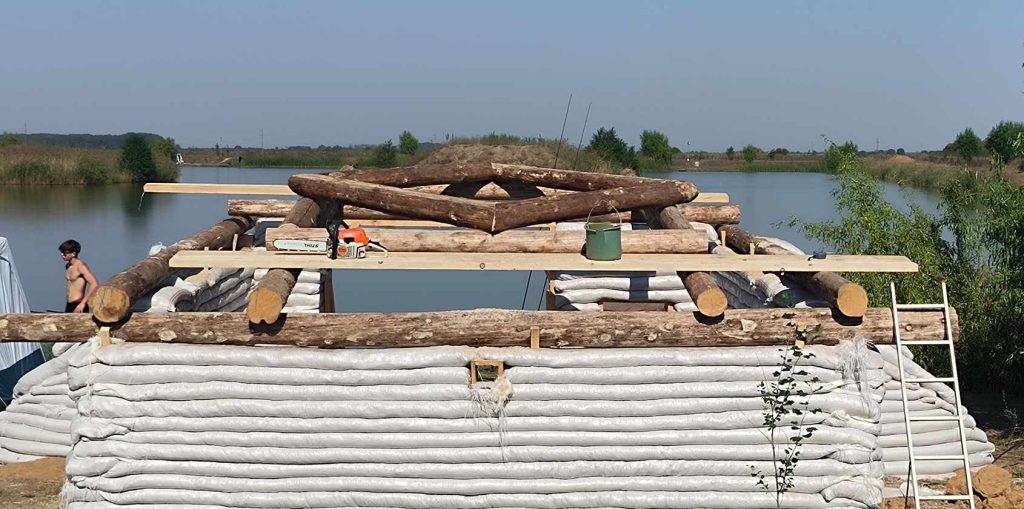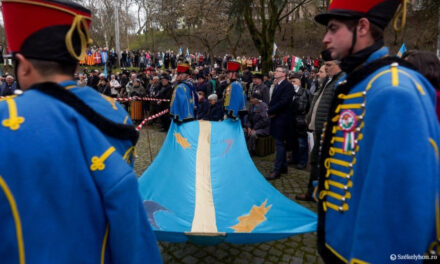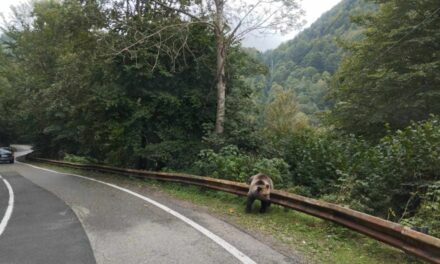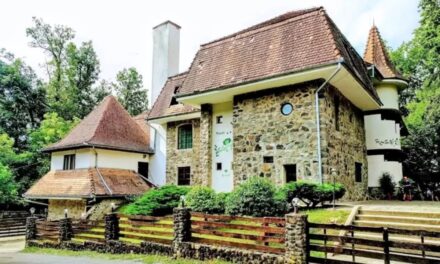If it's a hill house, it's super adobe: according to their designer, building with natural materials is not a sign of poverty, but rather of healthy thinking.
Next to Nagyszalonta, by a fishing pond, there are strange houses. Diligent hands built 18 small hill houses using super adobe technology. Each cottage with a usable floor area of 16 square meters offers fishermen much more comfortable accommodation than a tent.
The technology is cheap and environmentally friendly, since 4 people build each such cottage in about 2 weeks. One square meter of the attractive dwellings cost only HUF 300,000. The 50-centimeter-thick walls were built on a base of rammed earth and gravel packed in sacks. The houses were plastered with adobe on the inside and lime plaster on the outside. Each cottage has a small window on the top, so the building has natural lighting.

Photo: János Németh
We asked János Németh, who lives in Transylvania, about the super-loam technique, which is more common abroad, and the construction of the houses. Besides designing the fishing houses, he also organized their construction. The man is mostly involved in the construction of residential buildings, helping people to build themselves truly environmentally friendly, healthy, budget-friendly houses. According to János Németh, building with natural materials is a healthy way of thinking.
When and how did the idea of super clay fishing houses come about?
As unbelievable as it is, the Good God (who we can call Fate or the Universe) sent me this opportunity. It came into my life as a lifeline to free me - together with my family - from the urban squirrel wheel, where life was increasingly difficult for us. In the past, I often saw life as gray and monotonous. My first encounter with environmentally friendly construction revealed life to me as a colorful, "moving sphere". Partly thanks to the new approach, we managed to get out of the web of financial problems.
We have been living on a farm in Transylvania for eight years, the forest was visited by bears. We strive for self-sufficiency and a natural, simple lifestyle.
After twelve years of "modern", traditional construction, I became familiar with environmentally friendly methods and felt that I would be most useful to people as a consultant. I did theoretical and practical studies abroad for a few years, and then I worked on construction sites here.
What is your original profession?
I started life as a mechanic, I worked for 8 years in a soft drink bottling factory. Locksmith and boiler heater. Then I started in the construction industry as a helper. I liked it and learned quite quickly. I worked as an employee for eight years, then started my own business. At that time, I came across environmentally friendly construction, and today I deal exclusively with it.
Where did you first encounter this technology?
I worked with several types of technology. I have built adobe houses (`clump', adobe brick or rammed wall) and made straw houses from prefabricated straw panels using the so-called 'cordwood' technology. Projects where old, traditional houses are renovated using natural materials are common.
I saw different examples and technologies on the Internet. I hid the books and got to know him up close in actual locations. Since I found these technologies very interesting, I tried almost all of them in practice on small and large buildings.
The first year of my 12-year career as an environmentally friendly architect consisted mostly of studies, mostly at companies producing natural-based construction materials operating in Germany. I participated in construction sites and many workshops.
Later, at home, I experimented a lot, trying to put the theoretical knowledge into practice.
What do you need to know about lakeside houses built for fishermen? How were they made?
The walls can be made in several ways, from different materials. Most often, we build from straw (bales or pressed, prefabricated panels). The technology of fishing houses is called "superloam" in English, it is actually a combination of rammed earth and plastic ("raffia") bags.
Raffia bags are used as "temporary forms" until the clay soil is compacted. In this way, we can build much faster and more simply than, for example, with board formwork. Before plastering, the plastic is melted. This material does not burn with a flame, it just melts, so it essentially forms a kind of plaster on the clay.
During construction, you have to pay close attention to the drainage, you have to create adequate drainage, it is important that the external walls are permeable to moisture. Of course, this is not the most natural method - like, for example, the "clump", the traditional adobe wall or the adobe brick - but the advantage is that it dries faster and is cheaper, since two people can build quickly with this technology.
Special roofs for special houses. What are these made of?
Roofs can be of various types, but the "green roof" is often used. We also chose this, primarily because it fits in better with nature. A green roof can be cheaper, but it is nevertheless a very good heat and sound insulator. Unfortunately, the waterproofing layer is usually plastic, but I think if the rest of the house is made of natural materials, that's all we can compromise on.
Besides being a budget-friendly solution, what are the advantages of such a house?
Although at first it may seem that there is a lot of plastic (most of which melts), the walls allow the vapor to pass through, so you can live in a healthy environment. Heat storage is very good, heat loss is low, so we can say that they are energy efficient. I like them the most because they fit in completely, they almost blend into the natural environment.
Featured image: János Németh













